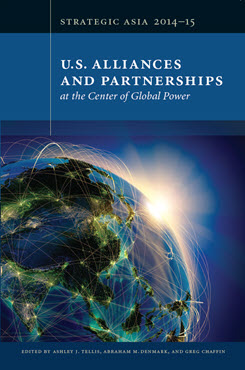The U.S. Alliance with the Philippines
Opportunities and Challenges
This chapter from Strategic Asia 2014–15 examines the history, current state, and trajectory of the U.S.‑Philippine alliance in light of evolving security perceptions in the Philippines and ongoing changes to Asia’s regional security environment.
EXECUTIVE SUMMARY
This chapter examines the history, current state, and trajectory of the U.S.‑Philippine alliance in light of evolving security perceptions in the Philippines and ongoing changes to Asia’s regional security environment.
MAIN ARGUMENT
The alliance between the U.S. and the Philippines has evolved significantly in recent years. Changes to the external and internal security environment of the Philippines have combined to catalyze a transition in the country’s security perceptions and priorities, especially a shift from an inward focus to one that is more externally directed. To meet rising external security demands, the Philippines has pursued a three-part strategy: internal balancing through increased spending, security cooperation with the U.S. and others in the region, and a diplomatic-legal strategy centered on international arbitration. This approach offers new opportunities for U.S.-Philippine cooperation but will also encounter both domestic and international challenges and constraints.
POLICY IMPLICATIONS
- This chapter examines the history, current state, and trajectory of the U.S. Philippine alliance in light of evolving security perceptions in the Philippines and ongoing changes to Asia’s regional security environment.
- Given that significant political sensitivity still exists in the Philippines about the U.S. presence, broadening the alliance beyond traditional security concerns to encompass humanitarian, economic, and cultural cooperation will help demonstrate its benefits to ordinary Filipinos and create a stable, long-term foundation for the alliance.
- For the foreseeable future, Washington and Manila will likely operate under domestic political and resource constraints. Each side should be aware of the other’s constraints and be prepared to handle divergences constructively.
- Creating a balance between a strong bilateral alliance and security relationships with other regional actors will reduce fears in the Philippines about overdependence on the U.S., achieve complementarity among actors with differing capacities, and foster a balance between reassurance and restraint.
Strategic Asia
The Strategic Asia annual edited volume incorporates assessments of economic, political, and military trends and focuses on the strategies that drive policy in the region. Learn more about Strategic Asia.


